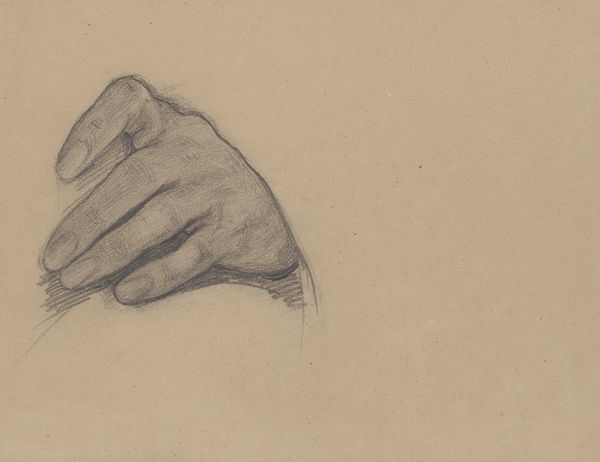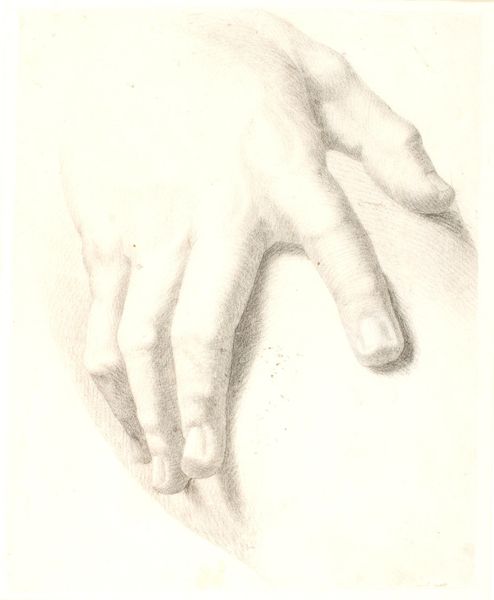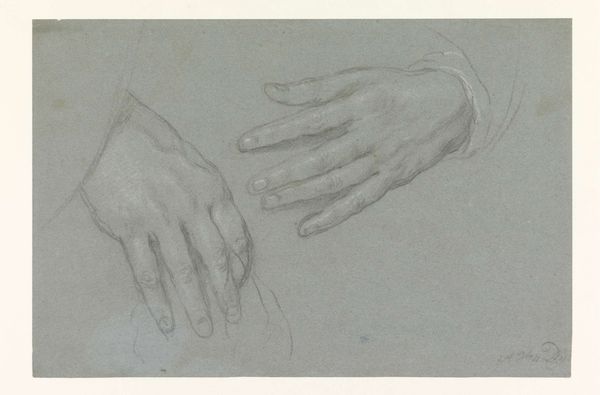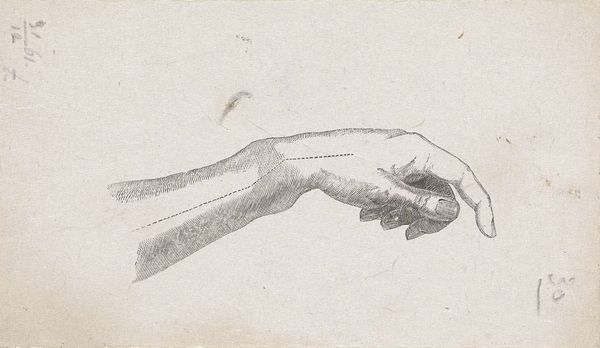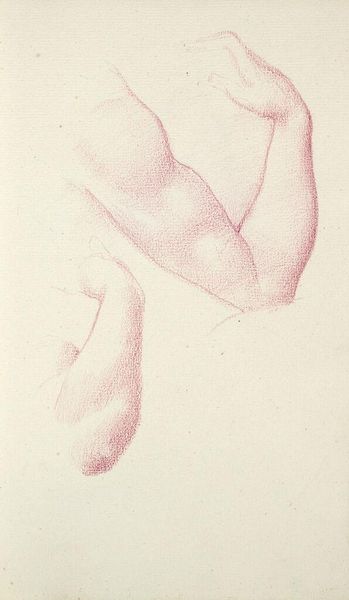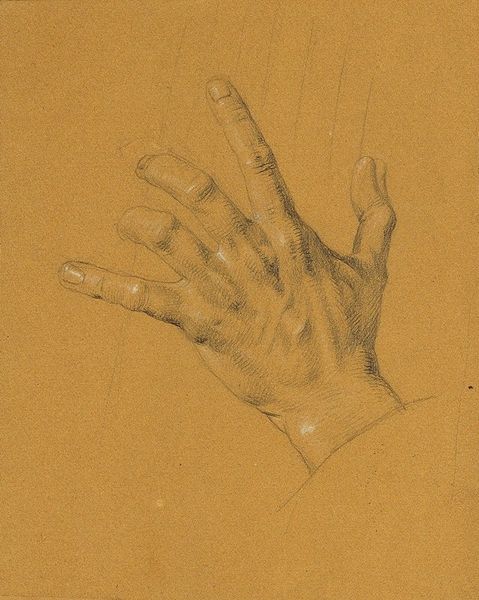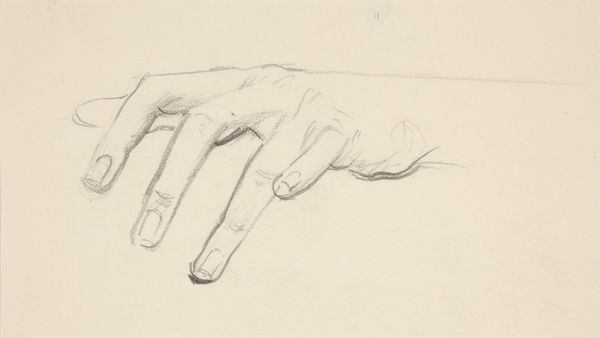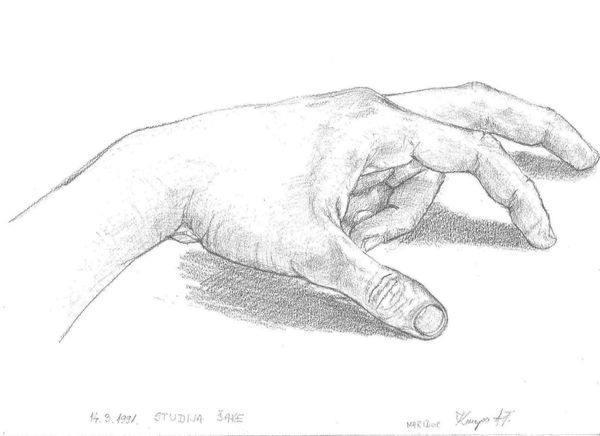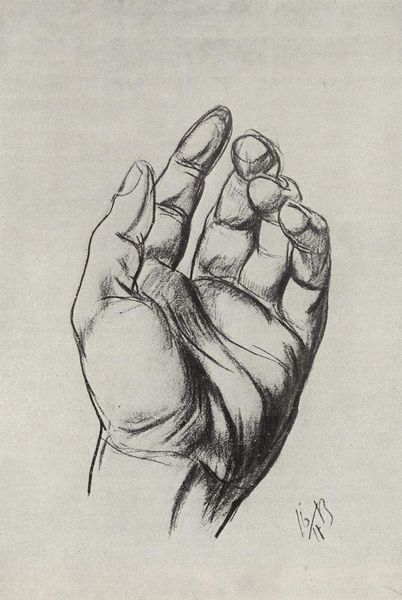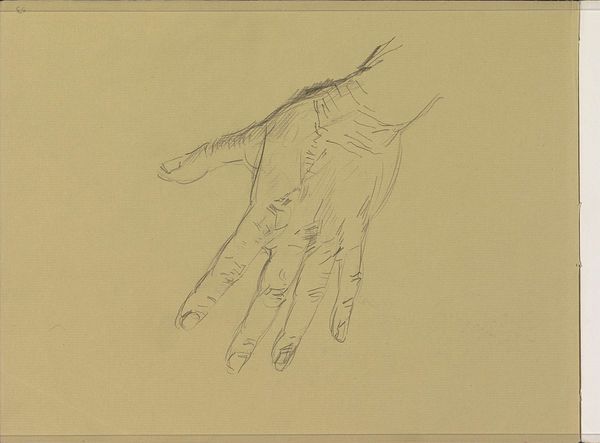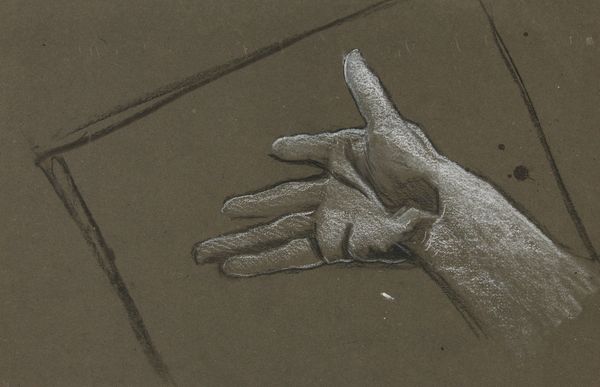
drawing, pencil
#
drawing
#
charcoal drawing
#
figuration
#
form
#
pencil drawing
#
sketch
#
pencil
#
academic-art
#
realism
Dimensions: 28 x 34 cm
Copyright: Creative Commons NonCommercial
Curator: Immediately, I see vulnerability in this gesture, as though the hand is exposed, open, almost beseeching. Editor: Yes, there's an almost painful sincerity to it. What's particularly striking about Alfred Freddy Krupa's 1993 "The study of the hand," rendered in pencil, is the way he captures the raw, unfiltered essence of form. We see a very precise representation here. It almost looks like an academic exercise in realism. Curator: Exactly. I bet there were many iterations before the final work; so many studies. You can sense him really feeling the form. Hands are endlessly fascinating; I’ve drawn them myself for hours and never quite manage to grasp how to render their shape accurately. This isn’t just observation; it’s feeling. Editor: Absolutely. Thinking about hands in the context of labor, and Krupa's hand in the production of this work—there's a real connection to labor, which leads to the question of who the hand represents. Is it a worker's hand, someone accustomed to manual tasks? Curator: Could be his. And what do we learn about a person from their hand? I imagine an older hand with toil-worn knuckles, slightly shaking…Or maybe it belongs to someone in grief; you see grief physically, in someone’s gait and also in the small tremors. That vulnerability becomes quite apparent. Editor: In contrast, perhaps Krupa might invite us to ponder not the "who," but the "what," or even the "how," as it's a vehicle to understand representation. He employs visible marks of the pencil to really push that tension between an accurate representation of reality with the inherent artificiality of an image. Curator: That’s it, exactly! And if we remember that Krupa began with the traditions of Japanese Ink Art—then shifted into Hyperrealism, then further still into New Realism. How many artists does one hand pass through on the way to the canvas? Editor: I never thought of it that way. In closing, viewing it from an art-historical perspective that acknowledges contemporary ideas surrounding the relationship between identity and representation, one cannot help but feel there’s still space for us to grapple with how this realism continues to inform how we see art and, thus, the world. Curator: Beautifully put. It also really makes you think about the skill of seeing… I'll try and pay closer attention to hands in the street today, noticing their expressiveness and unique individuality.
Comments
No comments
Be the first to comment and join the conversation on the ultimate creative platform.
